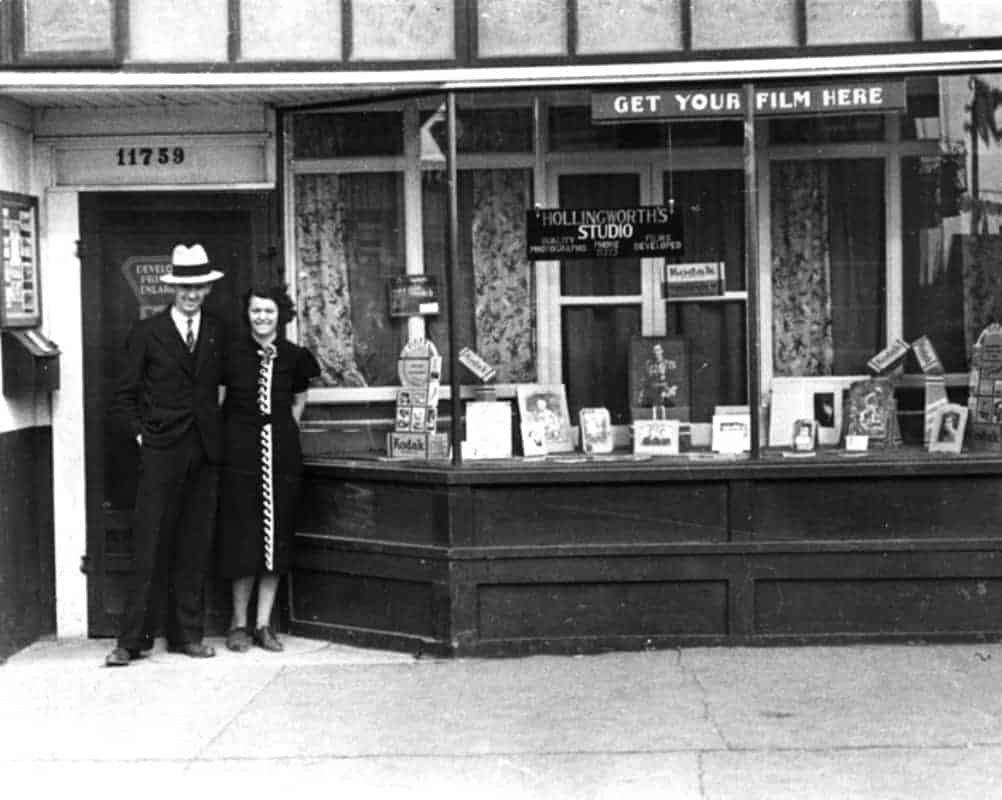A labour of love for the benefit of all
Hollingworth’s Studio no longer exists, but photographer Hubert Alan Hollingworth left a legacy.
As a photographer, he documented life in Edmonton over three decades. As a volunteer at the City of Edmonton Archives, he also made huge contributions.
“He was quite instrumental in doing so much of the work in the early archives,” said Kathryn Ivany, City of Edmonton archivist.
Hollingworth was born Feb. 8, 1912 in Lloydminster. According to Alberta on Record, in 1903 his family sailed from England to settle at the Barr Colony in Saskatchewan, which was founded by Anglican minister Isaac Barr.
According to R. Allen in The Social Gospel and the Reform Tradition in Canada, this group of about 2,000 middle-class English immigrants was part of a social movement that believed urban decay caused poverty and immorality. Farming was a route to social reform.
But the utopia wasn’t perfect. Many people left the colony because of hardship and strife. As Alberta on Record states, Harry Hollingworth, Hubert’s father, took a job with the Atlas Lumber Company and the family moved to Edmonton.
Hollingworth began learning photography at the age of 12 while he apprenticed with Bell Studios in downtown Edmonton.
The apprenticeship blossomed into a career, with Hollingworth eventually owning Hollingworth’s Studio. The 1939 Henderson’s City Directory lists the studio at 11759 95 Street. The site of the studio is now at the south end of the parking lot beside Downtown Auto on Alberta Avenue.
In Portraits of a Time, Lawrence Herzog explained how Hubert and his wife Violet lived at the rear of the studio and Violet helped in the dark room. But by 1940, the building was vacant. Hollingworth had left for wartime service as an aerial photographer.
After the war ended, Hollingworth took photos for McDermid Studios, the Edmonton Journal, the Edmonton Bulletin, and also helped found the Edmonton Camera Club. Hollingworth’s photographic style wasn’t artistic, but it was well-composed and journalistic.
According to Alberta on Record, Hollingworth worked for the federal government from 1954 to 1976. After retiring, Hollingworth volunteered at the City of Edmonton Archives. He also donated his collection to the archives and copied and catalogued the items.
Ivany explained Hollingworth’s collection “was one of the first ones that we had online.”
Hollingworth contributed a lot during his time at City of Edmonton Archives.
“He would do all the dark room work for us,” said Ivany. “He set up the programs that we used for the reference cards before digitalization.”
His collection of about 3,000 items is a valuable historical resource documenting life in Edmonton and the surrounding area during the 30s, 40s, and 50s. The collection is mainly photographic, but there are also films and short texts.
“His collection is hugely important to documenting the early history of Edmonton,” said Ivany.
Many of his photos and films provide public information. Subjects included newsworthy events such as fires, parades, sports, or royal visits. The working class hero was a favourite subject.
Ivany added that Hollingworth’s collection is “also useful because it documents the city’s growth and the downtown area specifically.” Included are more personal photos of his family.
Hollingworth died in 1988, but his legacy continues.
Header image: Hollingworth proudly poses in front of his studio at 11759 95 Street in 1939. The woman behind him is likely his wife Violet. | Hubert Alan Hollingworth.







